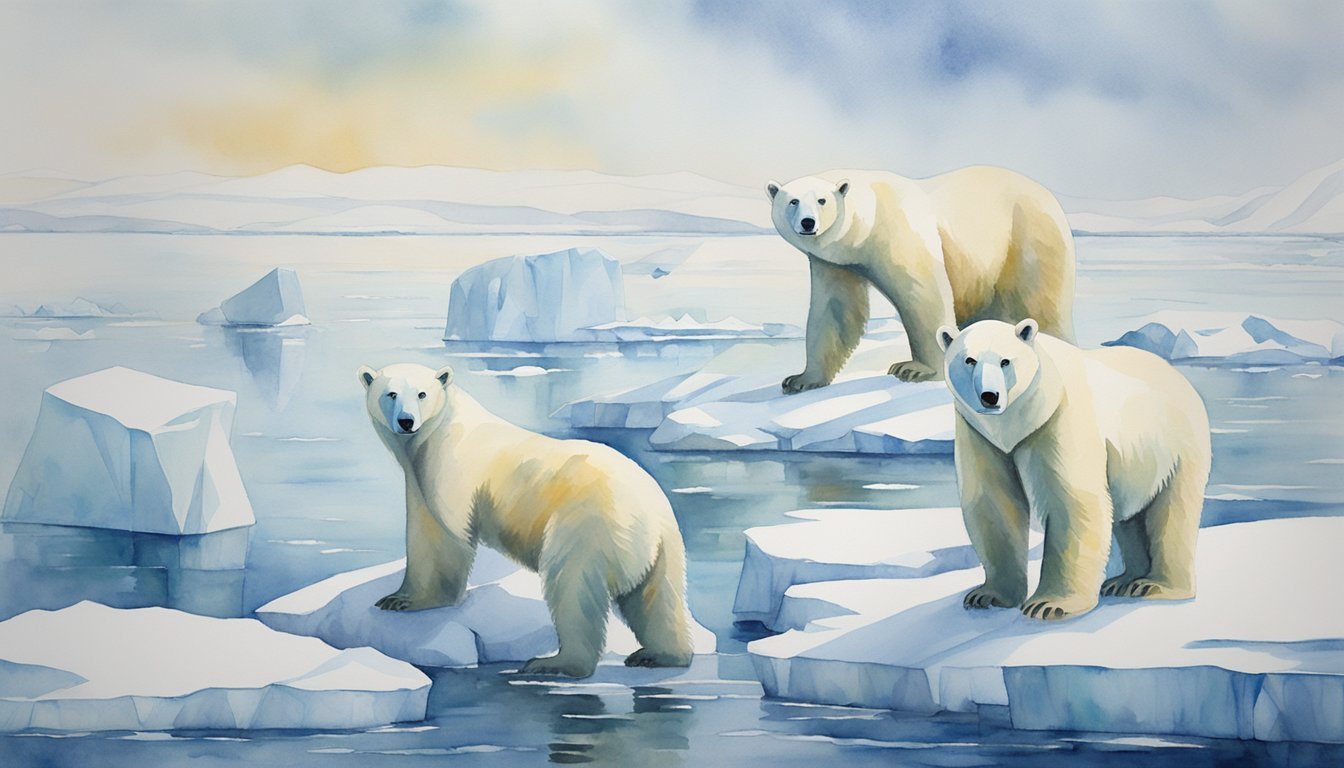Polar Bear Populations and Distribution
Current Population Estimates
The global polar bear population is estimated to be between 22,000 and 31,000 individuals. These bears are divided into 19 subpopulations around the Arctic. Some subpopulations have fewer than 200 individuals, while others have more than a thousand. The Polar Bear Specialist Group of the International Union for Conservation of Nature (IUCN) has determined that 4 populations are in decline, whereas 2 populations are increasing.
Geographic Range and Key Habitats
Polar bears are primarily found in the Arctic regions of Canada, Russia, Alaska, and other circumpolar countries, with their range extending from the edges of the Arctic ice pack to the northern reaches of the mainland. Key habitats of polar bears include the Western Hudson Bay, Southern Hudson Bay, Southern Beaufort Sea, Northwest Territories, Chukchi Sea, and East Greenland.
In Canada, a significant portion of the polar bear population can be found in the Western Hudson Bay and Southern Hudson Bay regions. These areas are particularly important for the seasonal movements of polar bears, as the bears rely on sea ice as a platform for hunting seals.
The Southern Beaufort Sea, which spans the border between Alaska and Canada, is another crucial habitat for polar bears. Here, they rely on the thick sea ice and abundance of seals for survival. Similarly, polar bears in Russia are commonly found within the Chukchi Sea region, which lies between Russia and Alaska.
The East Greenland area is another key habitat for a small population of polar bears. However, this region is under threat due to loss of sea ice. As a result, global polar bear numbers are projected to decline by 30% by 2050. Conservation efforts and research are continually conducted to monitor and protect these unique habitats and the polar bears that call them home.
Conservation Status and Threats

Climate Change and Sea Ice Decline
The International Union for Conservation of Nature (IUCN) classifies the polar bear as a vulnerable species, with a global population estimated to be between 22,000 and 31,000. The most significant threat to polar bears is climate change and the subsequent decline in their Arctic sea ice habitat. As the climate warms, the Arctic ice melts, reducing the availability of ice for polar bears to hunt seals, the primary source of food for the bears. Consequently, their survival, health, and body conditions are directly impacted.
Polar bears play a crucial role in the marine ecosystem, and their decline could disrupt the balance and overall health of the Arctic ecosystem. Moreover, the continued habitat loss raises the possibility of extinction.
Human Interactions and Hunting
Besides climate change, polar bears face additional threats from human activities such as habitat destruction, pollution, and hunting. Historically, polar bears have been hunted extensively. In the 1920s, 900 polar bears were harvested annually, whereas after World War II, the numbers grew between 400 and 500. Hunting regulations did exist, but the impact on polar bears was substantial.
Furthermore, interactions with human communities have increased due to habitat loss, leading to more instances of conflict. The bears have also been threatened by oil-related activities, as even a limited amount of oil on their fur can lead to liver and kidney damage. Moreover, the disturbance caused by seismic blasting, construction, and transportation related to oil facilities can negatively affect polar bear behavior and habitat.
Conservation Efforts and Research
Since the polar bears were listed as threatened under the Endangered Species Act (ESA) in 2008, organizations such as World Wildlife Fund (WWF) and Polar Bears International have increased their conservation and research efforts. They are working on addressing the urgent need for better population estimates and the effects of climate change on the bears. Additionally, the Polar Bear Specialist Group (PBSG) focuses on international cooperation for polar bear conservation and improved data gathering.
In conclusion, the conservation status and threats of polar bears need to be taken seriously. Increased efforts in research and international collaboration are necessary for their survival amid the climate crisis and other human-influenced risks.

